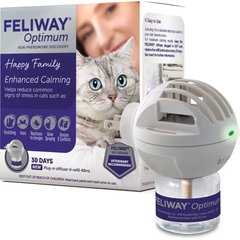


Amoxicillin is a common choice for treating infections in the urinary system of felines. This medication is often effective against a range of bacteria that can cause discomfort and health issues in your pet.
This article outlines various treatment options available for urinary infections in cats, focusing on their effectiveness and suitability. It will be beneficial for pet owners seeking to understand how to address these health concerns and improve their cat’s well-being.
In addition to amoxicillin, other alternatives such as cefovecin and enrofloxacin may be discussed. The selection of the right treatment depends on the specific type of bacteria present and the individual cat’s health status. Always consult a veterinarian to determine the most appropriate course of action tailored to your feline’s needs.
Recommendations for Treating Urinary Tract Infections in Felines
For addressing infections in the urinary system of felines, certain medications are frequently prescribed by veterinarians. These treatments target the bacteria responsible for the condition and help alleviate symptoms.
Commonly, practitioners choose agents based on the specific bacteria identified through urinalysis. The selected compounds can include those that are broad-spectrum, effectively combating various pathogens, or those tailored to specific types of bacteria.
Effective Medications
Several medications have proven reliable in treating urinary infections in felines:
- Amoxicillin: Often utilized due to its efficacy against a wide range of bacteria.
- Cephalexin: Another choice that works well against many urinary pathogens.
- Clavamox: A combination of amoxicillin and clavulanate, enhancing its effectiveness against resistant strains.
- Enrofloxacin: A fluoroquinolone antibiotic useful for more severe infections.
It is crucial to follow the veterinarian’s dosage recommendations and complete the prescribed course to prevent recurrence and resistance. Regular follow-ups may be necessary to monitor recovery and make adjustments to the treatment plan if needed.
In addition to medication, ensuring that your feline stays well-hydrated can support recovery and help flush out the urinary system. Providing fresh water and encouraging regular urination are beneficial practices.
Understanding Feline Urinary Tract Infections
Identifying the signs of urinary tract issues in felines is vital for prompt care. Common indicators include frequent urination, straining to urinate, blood in urine, and excessive grooming of the genital area. If any of these symptoms are observed, immediate veterinary consultation is necessary.
Urinary tract infections can result from various factors, including bacteria, bladder stones, and anatomical abnormalities. Stress and dietary changes may also contribute to the development of these conditions. Understanding the underlying cause is essential for determining the most appropriate treatment.
Causes and Risk Factors
Several factors may increase the likelihood of urinary infections in felines:
- Age: Older cats are more susceptible.
- Gender: Female felines may experience infections more frequently.
- Medical history: Previous urinary issues can increase risk.
- Diet: Poor nutrition and lack of hydration can lead to complications.
Diagnosis
A veterinarian will typically perform a physical examination and recommend diagnostic tests, such as:
- Urinalysis: To check for signs of infection or crystals.
- Urine culture: To identify specific bacteria causing the infection.
- X-rays or ultrasound: To detect stones or structural abnormalities.
Treatment Options
Upon diagnosis, treatment may involve:
- Medications: Veterinary-prescribed medications will help eliminate the infection.
- Dietary changes: Special diets may be recommended to prevent future occurrences.
- Hydration: Encouraging water intake to dilute urine can be beneficial.
Monitoring the feline’s progress and following the veterinarian’s guidance is essential to ensure recovery and prevent recurrence.
Effective Choices for Treating Urinary Tract Infections
For managing infections in the urinary system, several medications demonstrate a strong track record. These treatments target the bacteria commonly responsible for such infections, ensuring relief and recovery. A veterinarian will typically recommend a course based on the specific type of bacteria identified through testing.
Commonly, fluoroquinolones are chosen due to their broad-spectrum activity and ability to penetrate the urinary tract effectively. Another frequently prescribed option is cephalosporins, which provide a reliable alternative with a lower risk of resistance. Additionally, penicillin derivatives can be beneficial in treating specific bacterial strains.
Considerations for Antibiotic Use
When selecting a treatment, several factors should be taken into account:
- Type of Bacteria: Identifying the specific bacteria through a culture test helps ensure the chosen medication is effective.
- Severity of Infection: More severe cases may require a stronger medication or a combination of treatments.
- Allergies: It’s crucial to consider any known allergies to medications that may impact the treatment plan.
- Duration of Treatment: The length of the course will depend on the infection’s severity and the chosen medication.
Always consult a veterinarian before starting any treatment to ensure the best outcomes for recovery. Monitoring for side effects and improvements is vital throughout the treatment process.
Dosage Guidelines and Administration Tips
For optimal treatment of urinary tract conditions, it is imperative to adhere to precise dosage recommendations. Typically, dosages vary based on the specific medication prescribed, the severity of the infection, and the individual weight of the feline patient. Generally, many medications are administered at a rate of 5 to 10 mg per kilogram of body weight, given every 12 to 24 hours. It is crucial to consult with a veterinarian for exact calculations based on the particular situation.
Administration should be consistent and in accordance with the veterinarian’s instructions. To enhance compliance, consider the following strategies:
- Mixing with Food: Combining the medication with a small amount of your cat’s favorite food can make the process easier.
- Using a Pill Pocket: Special treat pockets designed for hiding pills can make administration more appealing.
- Liquid Formulations: If available, liquid versions can be easier to administer using a syringe, ensuring the entire dose is consumed.
- Positive Reinforcement: Rewarding your pet with affection or treats after administering the medication can create a more positive experience.
Monitoring your pet’s response to treatment is essential. Keep an eye out for any adverse reactions or changes in behavior. If any unusual symptoms occur, consult your veterinarian immediately to adjust the treatment plan as necessary.
Monitoring Your Cat’s Recovery and Side Effects
Regular observation of your feline’s health during treatment is essential. Look for signs of improvement or any adverse reactions to medications. Keeping a detailed log of your pet’s behavior, appetite, and any physical changes can aid in assessing their recovery.
Common side effects may occur with certain medications. Be vigilant and consult your veterinarian if you notice any unusual symptoms, such as vomiting, diarrhea, or changes in energy levels. Document these occurrences for a more accurate discussion with your vet.
Key Signs to Monitor
- Increased thirst or urination
- Loss of appetite
- Vomiting or diarrhea
- Behavioral changes (e.g., lethargy, aggression)
- Pain or discomfort (e.g., difficulty walking, excessive grooming)
Maintaining open communication with your veterinarian is crucial. They may suggest follow-up appointments or adjustments in treatment based on your observations. Always adhere to the prescribed course of treatment and avoid discontinuing medication without professional guidance.
In summary, close monitoring of your pet’s condition and timely communication with your veterinary professional will ensure a smoother recovery process and help mitigate any potential side effects from their treatment.
Best antibiotic for uti in cats
Features
| Part Number | 087219132937 |
| Model | 23010212PH |
| Size | 250mg |
Features
| Part Number | PW 0009-B |
| Model | Pet Wellbeing Urinary Gold for Cats - Na |
| Warranty | Pet Wellbeing Urinary Gold for Cats - Natural Support for Feline Urinary Tract Health - 2oz (59ml) |
| Color | Pet Wellbeing Urinary Gold for Cats - Natural Support for Feline Urinary Tract Health - 2oz (59ml) |
| Size | 2 Fl Oz (Pack of 1) |
Features
| Part Number | CROR454 |
| Size | 454 g / 1 lb |
Video:
FAQ:
What are the common antibiotics prescribed for urinary tract infections in cats?
Common antibiotics used to treat urinary tract infections (UTIs) in cats include amoxicillin, enrofloxacin, and trimethoprim-sulfamethoxazole. Amoxicillin is often chosen for its effectiveness against a variety of bacteria. Enrofloxacin is typically reserved for more severe cases or when other antibiotics are ineffective. Trimethoprim-sulfamethoxazole is another option that can be effective, particularly against certain resistant bacteria. The choice of antibiotic may depend on the specific bacteria causing the infection and the cat’s health condition.
How can I tell if my cat has a urinary tract infection?
Signs of a urinary tract infection in cats may include frequent urination, straining to urinate, blood in the urine, and increased vocalization during urination. You might also notice that your cat is urinating outside the litter box or appears to be in discomfort when trying to urinate. If you observe any of these symptoms, it is important to consult a veterinarian for an accurate diagnosis and appropriate treatment. Early detection and treatment can help prevent more serious health issues.
Can I give my cat antibiotics without a vet’s prescription?
No, it is not advisable to give your cat antibiotics without a veterinarian’s prescription. Antibiotics are specific to certain types of bacteria and using the wrong one can lead to antibiotic resistance and worsen your cat’s condition. Additionally, some antibiotics can have side effects or interact with other medications your cat may be taking. Always consult with a veterinarian to determine the appropriate treatment plan for your cat’s health issues.








